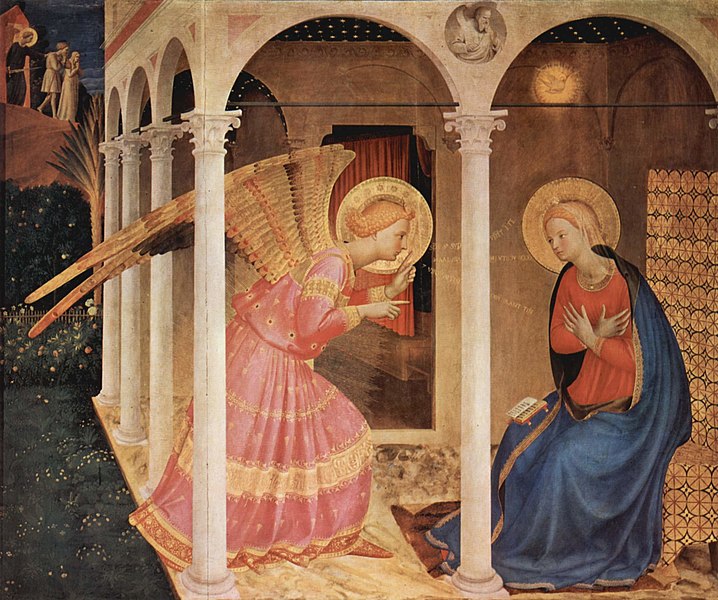All AP Art History Resources
Example Questions
Example Question #54 : Seventeenth And Eighteenth Century 2 D Art

What artist created this and other, similar etchings between 1797 and 1798?
Velasquez
Rembrandt
Guardi
Tiepolo
Goya
Goya
Goya created these etchings as a series of criticisms leveled at the frivolity of Spanish society at the time. This fits with Goya's other work, in which social commentary was a frequent presence. Rembrandt and Velasquez were 17th century painters, while Tiepolo and Guardi were not quite contemporaries of Goya, both being from a previous generation and dying before these etchings were made.
Image is in the public domain, accessed through WikiArt: http://www.wikiart.org/en/francisco-goya/what-will-he-die-1799
Example Question #55 : Seventeenth And Eighteenth Century 2 D Art

http://www.wikiart.org/en/francisco-goya/what-will-he-die-1799
What is the name of the series of 80 etchings that includes this work?
Los Caprichos
Witches' Sabbath
The Disasters of War
The Sleep of Reason Produces Monsters
The Madhouse
Los Caprichos
Los Caprichos is Goya's series created from 1797-1798, and it is notable for its recurring portraits of asses, bats, and other figures. The Disasters of War is a later series of etchings Goya made between 1810 and 1820 as a war protest. The Sleep of Reason... is perhaps the most famous etching from Los Caprichos, and Witches' Sabbath and The Madhouse are unrelated Goya works.
Image is in the public domain, accessed through WikiArt: http://www.wikiart.org/en/francisco-goya/what-will-he-die-1799
Example Question #56 : Seventeenth And Eighteenth Century 2 D Art

On the basis of style, the work shown can be attributed to _____________________.
Renoir
Matisse
Goya
Rembrandt
El Greco
Rembrandt
This image is recognizably Rembrandt. Rembrandt is famous for portraits and self-portraits with stark lighting on the subject's face and a dark background behind. In addition, he often had his subjects pose in elaborate costumes like this, which depicts an old man in a turban.
Image is in the public domain, accessed through WikiArt: http://www.wikiart.org/en/rembrandt/old-man-with-turban
Example Question #57 : Seventeenth And Eighteenth Century 2 D Art

On the basis of style, the work shown here can be attributed to ______________.
Francisco de Goya
Jean-Honore Fragonard
Eugene Delacroix
Jacques-Louis David
Jacques-Louis David
Jacques-Louis David was the foremost Neoclassical painter of late eighteenth century France, who was especially well known for his history paintings, such as The Oath of the Horatii shown here. Neoclassicism was a response to the excesses and embellishments of Rococo art, finding a clarity and precision in adopting classical themes from Ancient Greece and Rome. The Oath of the Horatii is based on a story from the Roman author Livy, and David presents the work in a highly composed format which reflects on the theme of loyalty to country and family.
Artwork from Wikimedia Commons: https://commons.wikimedia.org/wiki/File:Jacques-Louis_David,_Le_Serment_des_Horaces.jpg
Example Question #51 : Seventeenth And Eighteenth Century 2 D Art
The Florentine noble family whose members were patrons of artists like Michelangelo, Leonardo da Vinci, and Botticelli were the __________.
Medicis
Habsburgs
Machiavellis
Borgias
Medicis
The Medicis were a banking family who gained power in Florence during the fifteenth century and held sway for over two hundred years in the Northern Italian city state. While controlling the wheels of state, the Medicis were also important patrons of important Renaissance artists, making great strides in art possible in the sixteenth century. In particular, artists like Leonardo da Vinci, Michelangelo, and Botticelli were only able to make the works they did because of the protections of the Medicis.
Example Question #59 : Seventeenth And Eighteenth Century 2 D Art
The Italian artist Caravaggio is most closely associated with __________.
the Romantic era
Neoclassicalism
the Baroque era
the Medieval era
the Baroque era
Caravaggio (1571-1610) built on earlier Renaissance paintings that used naturalistic poses and deep use of contrast and color, but pushed them into almost new forms. Caravaggio focused on emotional themes through natural pose and extremely sharp contrasts between dark and light elements in his paintings. These refinements were key to the development of the Baroque style of the seventeenth century.
Example Question #60 : Seventeenth And Eighteenth Century 2 D Art
The artists who created each of these paintings were __________.
French
Dutch
English
Italian
Dutch
These paintings are two classic examples of Dutch painting from the seventeenth century: Figure 3 presents The Night Watch by Rembrandt van Rijn (1642), and Figure 4 shows The Astronomer by Johannes Vermeer (1668). Both exhibit typical features of Dutch golden age painting, including strong contrasts and vivid colors, which are used to portray important Dutchmen of the day.
Figure 3: The Night Watch by Rembrandt van Rijn (1642)
Figure 4: The Astronomer by Johannes Vermeer (1668)
Example Question #61 : Seventeenth And Eighteenth Century 2 D Art
The painting shown in Figure 3 portrays __________.
town leaders
knights
a group of religious initiates
a band of militiamen
a band of militiamen
The men in the foreground of Rembrandt van Rijn's The Night Watch all carry muskets and wave banners, indicative of militia soldiers in the seventeenth century. The captain, Frans Banning Cocq, was an actual leader of a militia, and Rembrandt intentionally captured his company. It was also intentional on the artist's part to show their supporters behind them.
Figure 3: The Night Watch by Rembrandt van Rijn (1642)
Figure 4: The Astronomer by Johannes Vermeer (1668)
Example Question #62 : Seventeenth And Eighteenth Century 2 D Art
The painting shown in Figure 2 was created around __________.
1750
1650
1700
1800
1800
Francisco de Goya became the court painter to King Charles IV of Spain in the 1790s, and made many portraits of the royal family until Napoleon invaded Spain in 1808. This painting, Charles IV of Spain and His Family, was made in 1801, and shows a dynasty trying to keep itself together.
Figure 1: Las Meninas by Diego Velázquez (1656)
Figure 2: Charles IV of Spain and His Family Francisco de Goya (1801)
Example Question #61 : Seventeenth And Eighteenth Century 2 D Art
The image shown in Figure 4 was influenced by __________.
Puritanism
the Spanish Inquisition
the Counter-Reformation
Jansenism
the Counter-Reformation
After the German priest Martin Luther inaugurated the Protestant Reformation in 1519, the Roman Catholic Church made various attempts to reinforce itself. In the mid-sixteenth century, the Counter-Reformation came about, during which Catholicism sought to address the criticisms of the Protestant Reformation while remaining loyally Catholic. Carvaggio's painting of the disciples encountering the risen Jesus at Emmaus is emblematic of this trend, as the work shows shows a realistic, devotional, and personal religion that nonetheless has a focus on mysticism and traditional Church doctrine.
Figure 3: The Annunciation (Cortona) by Fra Angelico (1433)
Figure 4: Supper at Emmaus (Milan) by Caravaggio (1606)
All AP Art History Resources










